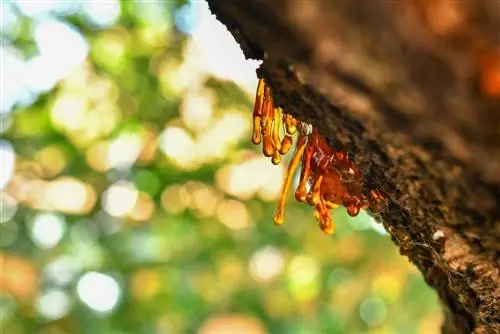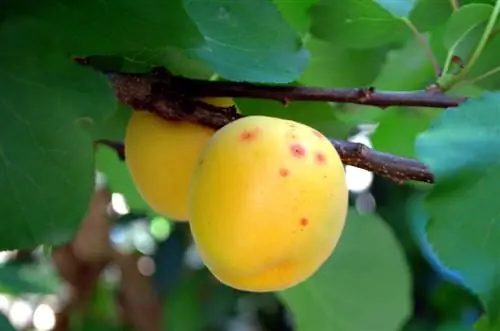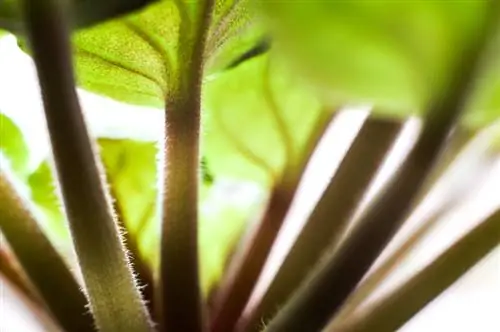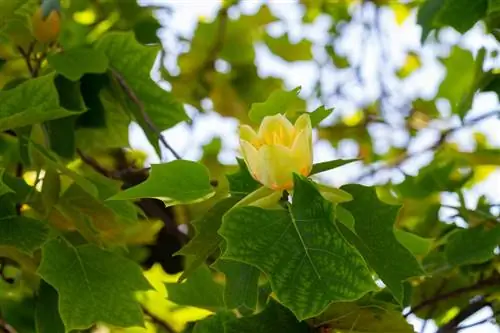- Author admin [email protected].
- Public 2023-12-16 16:46.
- Last modified 2025-01-23 11:22.
Resin-like discharge can form on some branches or the trunk of an apricot tree. This is dissolved plant tissue. In technical language this is known as gummosis. But why does rubber flow occur and what consequences does it have for the tree?
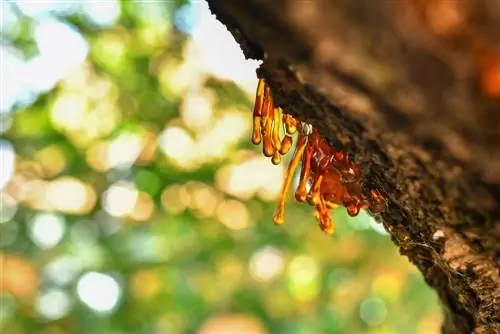
What causes resin flow on the apricot tree and how to treat it?
Gum flow on the apricot tree is a physiological disorder that manifests itself in resin-like growths on the branches or trunk. The causes for this are usually unfavorable living conditions, injuries, illnesses or pests. Prevention and treatment include pruning and improvements to growing conditions.
Affected apricot trees
The apricot tree is one of the fruit trees in the home garden that is particularly susceptible to resin flow. It can also be observed that mostly young or old trees are affected. This is because they have either not yet developed or have already lost their full resistance due to unfavorable living conditions.
Outbreak of the disease
Resin flow is a physiological disorder of the apricot tree that is clearly visible externally. Resin-like growths appear on branches or trunk. They are reminiscent of the resin of conifers, but are formed from dissolved plant tissue.
The resin comes out mainly in injured areas of the tree. The cracks can also be very small and barely noticeable. Occasionally fruits can also be affected by resin flow.
Causes of resin flow
The resin flow that occurs is not a symptom of a specific disease. Rather, it is a characteristic of a weakened apricot tree. There can be various causes for this weakness:
- heavy and wet soils
- Frost and wetness
- Injuries to the bark caused by frost or when cutting
- Error when fertilizing
But various diseases such as curl disease, monilia, valsa disease and scrap shot disease can also weaken the tree so much that it develops gummosis. Likewise the pest bark moth.
Impact
The exit points are open gates for pathogens and thus promote the outbreak of other diseases. But the resin flow can also spread inwards. Then it clogs the tree's supply channels. The affected area is no longer properly supplied with water and nutrients. Due to this lack of supply, it dies over time. In the worst case, the entire apricot tree can die.
Do the right thing
Optimize the tree's living conditions in the future to avoid further weakening or to strengthen it. An apricot tree that is already resinous must definitely be treated with pruning measures.
- cut affected branches back to 20 cm long cones
- Resin flow forms on the spigot
- this dies over time and can be removed
- so the remaining he althy tissue is not damaged
Tip
Endangered apricot trees should generally be cut in the summer after harvest. This promotes rapid wound healing and slows down growth. Under no circumstances should you use scissors in winter.

